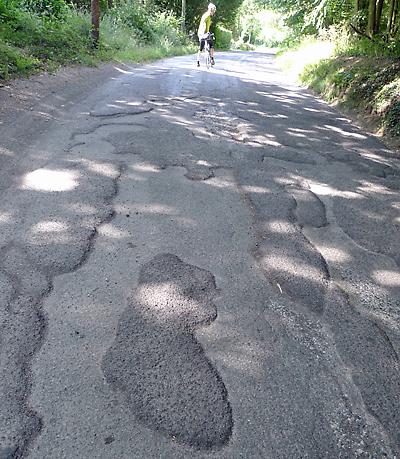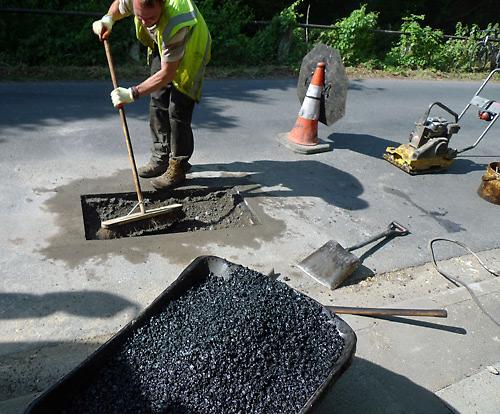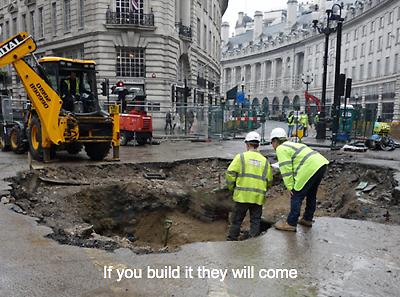- News
- Reviews
- Bikes
- Accessories
- Accessories - misc
- Computer mounts
- Bags
- Bar ends
- Bike bags & cases
- Bottle cages
- Bottles
- Cameras
- Car racks
- Child seats
- Computers
- Glasses
- GPS units
- Helmets
- Lights - front
- Lights - rear
- Lights - sets
- Locks
- Mirrors
- Mudguards
- Racks
- Pumps & CO2 inflators
- Puncture kits
- Reflectives
- Smart watches
- Stands and racks
- Trailers
- Clothing
- Components
- Bar tape & grips
- Bottom brackets
- Brake & gear cables
- Brake & STI levers
- Brake pads & spares
- Brakes
- Cassettes & freewheels
- Chains
- Chainsets & chainrings
- Derailleurs - front
- Derailleurs - rear
- Forks
- Gear levers & shifters
- Groupsets
- Handlebars & extensions
- Headsets
- Hubs
- Inner tubes
- Pedals
- Quick releases & skewers
- Saddles
- Seatposts
- Stems
- Wheels
- Tyres
- Health, fitness and nutrition
- Tools and workshop
- Miscellaneous
- Cross country mountain bikes
- Tubeless valves
- Buyers Guides
- Features
- Forum
- Recommends
- Podcast
OPINION
Potholes
What do roadies hate more than anything else? No, not other roadies who are faster than them. Cars driven by maniacs rate a scowl, but they come and go: these are here to stay.
Potholes. Fixing them is like painting the Forth Bridge.
On the road again
I've had a long, occasionally rocky love affair with the road. It helped me stage numerous getaways during my hitchhiking era. On my bike every day now it is the runway pitching me into flight, only bringing me back down to earth with the teeth-rattling thud of the unfilled cavity. Although I am largely at peace with the road despite the lack of influence of the Highway Code on its main users, it could also literally be the death of me. Some years ago a crater knocked me off my saddle and into unconsciousness, waiting to see if the next car would use me as a speed bump and fodder for a hole five and a half feet deeper.
Two skinny wheels and 120lbs per square inch of pressure: that's our relationship at its most basic. It's a marriage made in heaven, except when it isn't.
Increasingly, as council budgets tighten, picking a path between potholes has figured ever larger in the cyclist's repertoire. They claim victims in all social strata of traffic. Even Boris Johnson lost 'Old Bikey' – not an Etonian chum, but a cherished steed – to a veritable Marianas Trench hidden within an "inky meer" earlier in the year.

All roads lead from A to B
The Romans were renowned for their arteries of transport, some of which remain in steady use. In their original form and in a system not a thousand miles away from the alphabetising employed today to designate importance, they ranged from "a plain road of levelled earth" to grand concreted thoroughfares, often "flanked by footpaths, bridleways and drainage ditches," according to that other great public works project, Wikipedia. You can easily imagine the master builders adding cycle paths had the bike been invented alongside the chariot.
Sadly most of their know-how was forgotten or ignored during the Middle Ages. It wasn't until the French engineer Pierre-Marie-Jérôme Trésaguet applied scientific rigour to the process in the 18th century that roads got back on track. Trésaguet took the layered approach, small stones on big ones then rammed together by traffic to form a friendlier surface to wheel, if not foot. Like a Persian carpet, stomping increased their value.
Roads finally become something to brag about again when John McAdam then pioneered the type of construction named if not quite spelt after him. Macadamisation did away with the need for large foundations of rock as support, both simplifying the process (native soil became a suitable foundation) and complicating it immensely by depending upon an exacting rock grading system to form a surface crust which would protect the substrate from water and wear. McAdam "believed that the 'proper method' of breaking stones for utility and rapidity was accomplished by people sitting down and using small hammers, breaking the stones so that none of them was larger than six ounces in weight." The workman, rather indistinguishable from the Hollywood vision of a prisoner it seems to me, could then "check the stone size himself by seeing if the stone would fit into his mouth."
This ingenuity was compounded by the latter addition of tar, which settled the dust problem caused by the effect of traffic grinding rocks into pebbles and pebbles into particulates, but heralded the modern age of the pothole at the same time. When the surface cracks for whatever reason – ceaseless traffic and thundering lorries are one; Jack Frost, another – water, that universal solvent, goes to work, if it hasn't already been busy weakening the foundation thanks to capillary action from the sides.

I don't know when the first modern pothole appeared, but it must have been a particularly unpleasant surprise to the first cyclist that the roads being built for him or her weren't always what they were cracked up to be. What's worse, over the years as other traffic has taken over, it is the cyclists who suffer in inverse proportion to the nil damage they cause. The Fourth Power Rule of thumb states that a tractor trailer causes roughy 6500 times more damange than a Prius, which itself does 38,000 times more damage than a bicycle; ammunition for your next road tax argument. Tell 'em to do the math.
If there was ever a golden age of roads, it may have been pre-Beeching, before so much of the UK's rail network was rationalised in favour of personal motorised transport. I wasn't around then, but I imagine the open road more open, much less beaten into submission by the lower population of hauliers, commuters and joyriders. Of course there were fewer roads, too.

A short quiz
When you meet a pothole, what do you do?
a) Slow down and get out of your saddle if you can't avoid it
b) Curse the council for featherbedding its executives but leaving the rest of us to rough it
c) Report it
All three are correct, but if you want to get it seen to you're going to need to properly document it. My local council needs to know exactly where it is and how big it is so they can assign a rating to slot it into their repair schedule, which ranges from holes "more than 100mm deep and more than 300mm wide" on A and B roads promised to be fixed within two hours, to those on C and unclassified roads less than 40mm deep given a reprieve of up to 12 months.
There is no permanent pothole repair. There is only temporary ("patching compound placed in an expedient manner") and semi-permanent. In the latter case a better attempt is made to debride the wound and generally neaten things up, and a different forumula for filler. Which is used depends on the weather and how much change is left in council pockets.
The CTC runs a dedicated website, Fill That Hole, which includes a handy form, a league table, and Pothole News. They also do an app for ease of on-the-spot reporting.
Part I of II

More Opinion
Latest Comments
- chrisonabike 14 min 28 sec ago
I guess it depends what you're hoping for in terms of "progress"?...
- wtjs 20 min 50 sec ago
I'm sorry I close passed you but my vehicle is too wide...
- Oldfatgit 26 min 47 sec ago
I think there is more chance of an Internet Portal and Plocez Scotland doing something to help cyclists, before presumed liability comes in.
- mdavidford 37 min 26 sec ago
While the overall point may be fair, applying the '50% of adults have a license' is almost certainly rather misleading - it's highly unlikely that...
- Sredlums 53 min 38 sec ago
Even in our 'cycling perfect' country (The Netherlands) overtakes like those are totally common. I wouldn't bat an eye, honestly....
- mdavidford 36 min 44 sec ago
No they haven't, otherwise there wouldn't still be a debate over it.
- Jack Sexty 2 hours 43 min ago
Sorry, fixed the double entry! ...
- Steve K 2 hours 57 min ago
BMW Mini, not a proper one.
- rct 3 hours 19 min ago
See recently reported comments by elected labour party represenetives in Burnley to see how that works.
- hawkinspeter 4 hours 51 min ago
I often come into Bristol along the dual carriageway there as it's quicker than trying to find my way on the bike paths, but then I'm used to...





Add new comment
14 comments
I have lots of ideas to revolutionise the modern world, they pop into my head at 3;30 in the morning...I really should ask Google Labs for a job
My latest idea is a small bicycle mounted laser surface scanner that connects to a smartphone (via bluetooth?) and mounts on the bike and reads the road surface while you travel, picks out potholes as it goes, and using the phone connection automatically uploads the pothole size and GPS position to the fixmystreet database (and onto the councils)...
Bikes are relatively slow moving (in comparison to cars) so the scanning would be more accurate/less processor hungry than mounting on fast moving cars
It could perhaps be funded by a levy on the pothole repair industry, get enough of them on bikes out there and you have a massive crowdsourced pothole reporting system that might even make us popular with motorists !!!
And ironically... last night I hit a hole. Hard. No puncture (thankfully) but I now have a big bruise on my right adductor... and what sounds like a broken saddle. Creaks badly when you push down on the nose. Hmph.
It's no hardship, higher pressure suits me.
`Two skinny wheels and 120lbs per square inch of pressure' - why punish yourself ? I switched to wide rims (Ardennes+) and lower pressure tires to deal with the truly awful Cambridgeshire roads. A big improvement.
The third photo shows not potholes but the inevitable result of 'top dressing', bald patches developing as the surface deteriorates. Maybe if the councils stopped wasting (our) money on doing this (badly), and spent it on repairing potholes properly the situation would improve.
That's fine for A, B and C category thoroughfares, but I wonder what the turnaround time for "rutted farm tracks" is, because that's the category many of the roads around Edinburgh seem to "fall into".
Pot holes.
Good article - a pleasant charge from the seemingly endless parade of "aren't motorists evil" posts.
Well, they do wear the road out 38,000 times faster?
I'd like to make a confession. When I'm out on a ride, I don't interrupt it by stopping, fishing out my phone, taking a photo and reporting holes.
We should set up a neighbourhood watch system - everyone looks after their own road... oh wait. The council should be doing that...
The Big Society put an end to "The council should be doing that..." The council will have had its spending in real terms limited, severely, since the ConDems took over.
I must admit neither do I. What I do is take a mental note of where it was, go to google maps and screen shot where the pot hole is and forward that on instead. At the moment Edinburgh Cooncil are pretty much resurfacing most of the A71 based on this. If its not marked for repair next time I pass I just re mail it untill they do.
Yes I know its a PITA and takes 3 minutes out of my day, but its making its safer for all my fellow road users.
Stockport Council have a very strange approach to potholes. First a team of workmen come out and one will measure the potholes while the others stand around watching. If the measurements are such that the hole be deemed worthy of filling he spray paints a circle around it and they all leave. At a later date another team will arrive with a truck, some Tarmac and a shovel and fill in the holes which are circled. Obviously if you see it being done you can spray your own circles around other holes and they will get filled.
It seems to me it would be more efficient to just to do away with the first team and have the guys with the shovel fill all the holes.
Wonder how the Roman's dealt with pot holes eons ago?